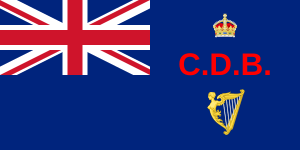Congested Districts Board for Ireland facts for kids
The Congested Districts Board for Ireland was a special group set up in 1891. Its main goal was to help people living in very poor areas in the west and northwest of Ireland. These areas were called "congested" because many people lived close together on small, poor pieces of land.
The Board was created by Arthur Balfour, who was a British government official for Ireland. It was closed down in 1923 by the new Irish government. Its work was then taken over by other government departments.
Contents
What was the CDB's Goal?
The Congested Districts Board (CDB) was part of a plan by the British government. This plan aimed to improve life in Ireland. The idea was that if people's lives got better, they might not want Home Rule, which meant Ireland governing itself.
The CDB tried to reduce poverty in many ways:
- They paid for public works, like building piers for fishing boats.
- They helped farmers learn new and better ways to farm.
- They supported local factories to create jobs.
- Their work aimed to stop people from leaving Ireland to find work elsewhere.
For example, on the Aran Islands, the CDB helped start a knitwear industry. Today, Aran knitwear is still made there by skilled local people. The areas the Board helped were places where the land was not worth much money. In 1901, these areas covered about 3.5 million acres (14,164 square kilometers) and had a population of 550,000 people.
Where Did the Money Come From?
The money for the CDB first came from the Church of Ireland. By 1912, the Board had other funds too. Its total money was about £530,000, which would be worth around £40 million today.
Helping Farmers with Land
After a law called the Land Purchase (Ireland) Act 1903, the CDB was allowed to buy extra land. They bought land from large estates. Their goal was to make the small farms of tenants bigger and better.
In 1909, the Board got special powers. They could buy land even if the owners didn't want to sell it. They then started to divide up over 1,000 estates, which covered about 2 million acres (8,094 square kilometers). This helped many families get better land.
One big success for the Board was improving and enlarging farms. They bought land from big landowners. Then, they made smaller, more efficient farms for people. The French estate in County Galway was the first land they bought. By 1919, the Board had spent ten million pounds on land.
A great example of their work was on The Dillon Estate in Counties Galway and Roscommon. In 1899, the Board bought this estate, which was over 93,652 acres. It cost £290,000, which was the most the CDB ever paid for one estate. Much of this land was wet and often flooded. The Board fixed this by doing a huge drainage project. This doubled the value of hundreds of acres of land. They also built roads, fences, and houses.
Boosting the Fishing Industry
The Congested Districts Board also had a big impact on fishing. They spent over £100,000 on building projects. These included harbors, piers, roads, bridges, and drainage systems. This work gave fishermen and farmers better tools and places to work.
The Board also taught people skills for the fishing industry. They taught how to make barrels, nets, and even boats. The Board provided 91 fishing boats around Ireland. Twenty-three of these boats were built in places like Connemara and Killybegs in County Donegal. These boats were worth £15,000, even without nets or gear.
How Well Did the CDB Do?
Historian John Joseph Lee looked back at the CDB's work. He said that the Board's promises often sounded better than what they actually achieved. He noted that the CDB spent a lot of money on projects in western Ireland and County Donegal. However, these projects often failed once the Board stopped giving them money. This meant that people still left these areas to find work, instead of moving to more developed parts of Ireland.
See also



